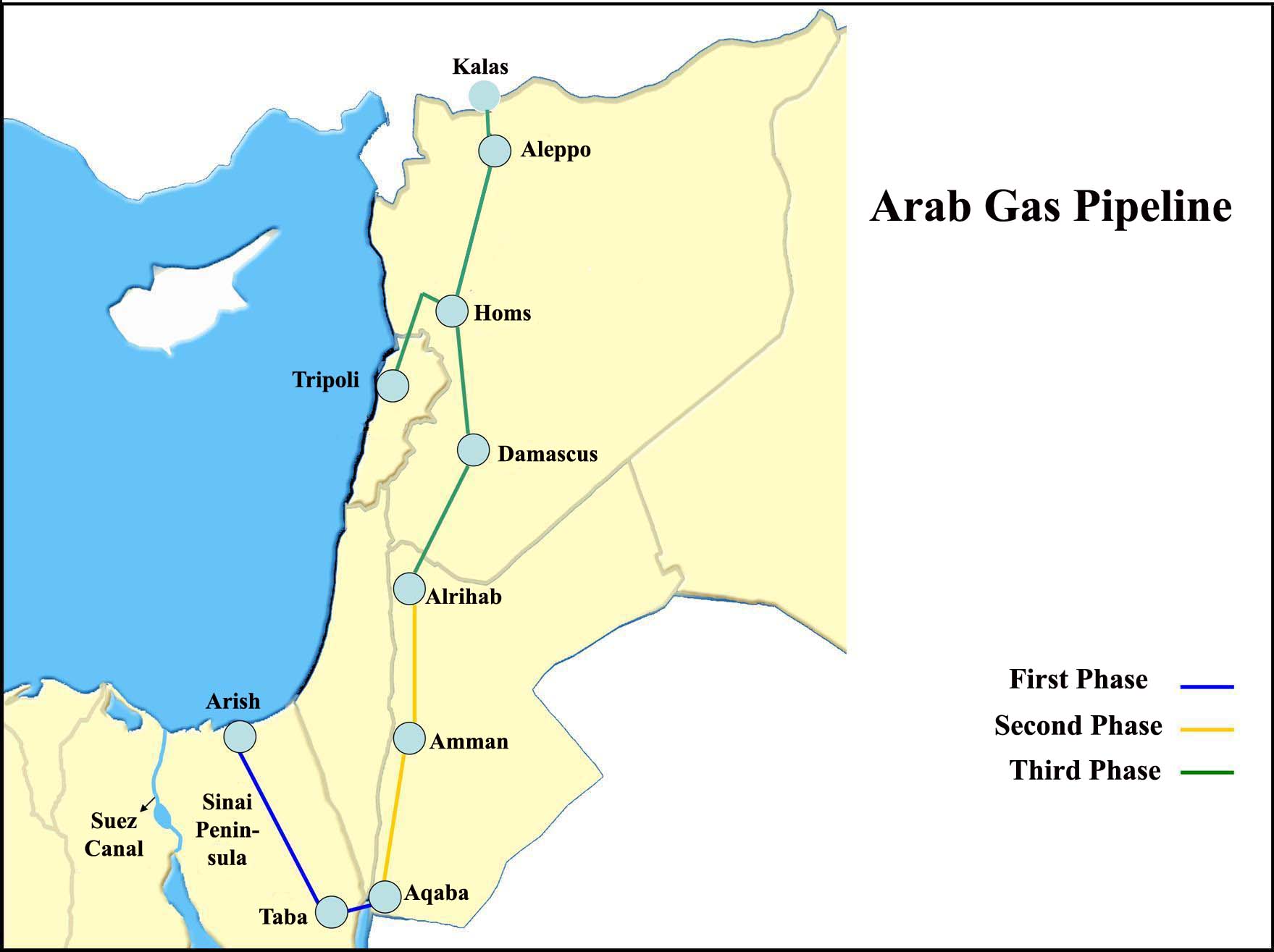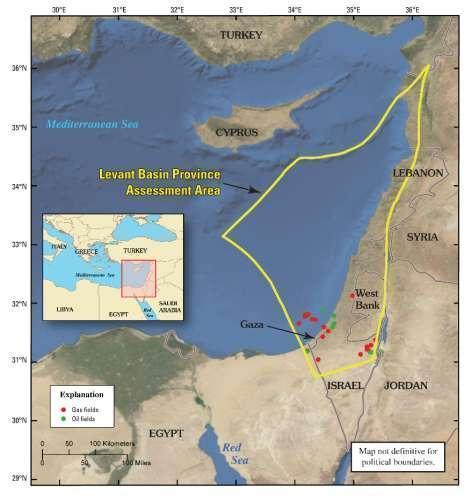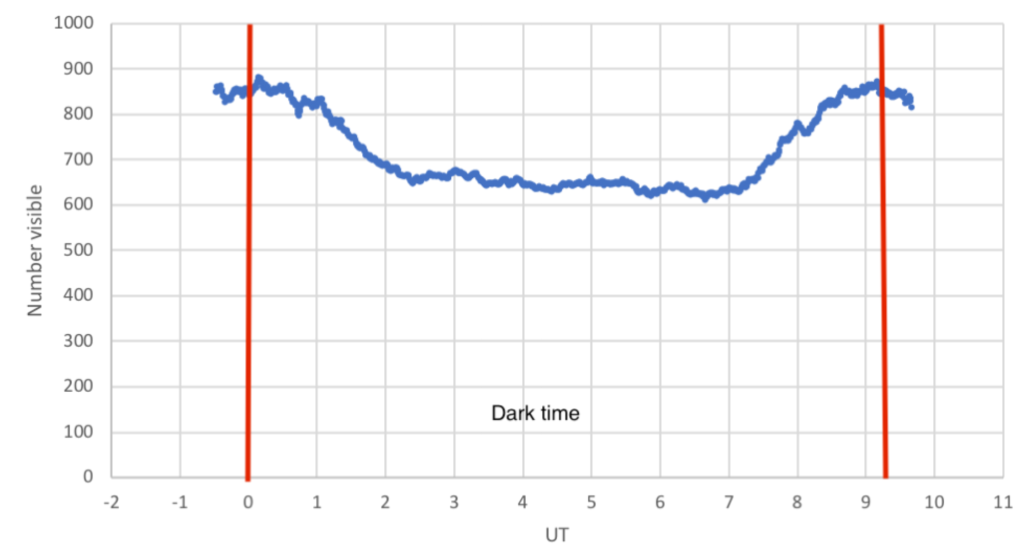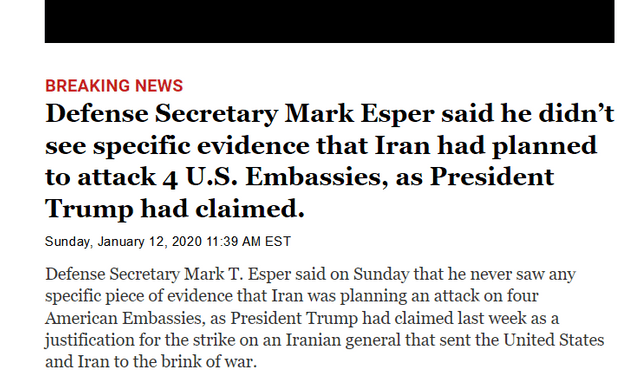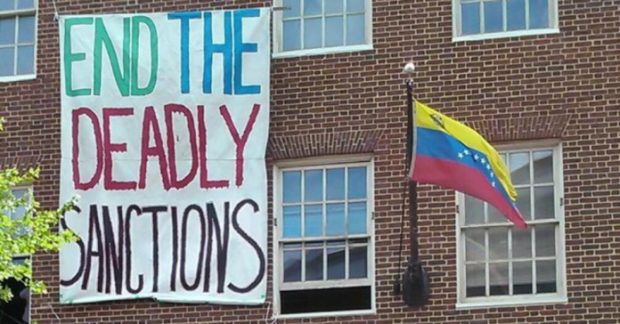Following the US assassination of Iranian General Qassem Soleimani and Shiite Iraqi militia commander Abu Mahdi al-Muhandis at Baghdad International Airport, the Iraqi PM, the Iraqi Parliament Speaker and the Iraqi Parliament have demanded that the US Alliance forces leave Iraq. The US, UK, Australia, Canada and Germany have rejected the Iraqi Parliament’s Quit Iraq demand, with the US threatening to instantly collapse the Iraqi economy by a banking freeze if Iraq insists on US Alliance withdrawal from its territory.
(1) US Alliance violates Iraqi sovereignty and rejects the Iraqi Parliament’s Quit Iraq demand.
Iraqis were outraged by the criminal murder by drone missile attack of Iranian General Qassem Soleimani (Iranian hero, commander of the Quds Force of the Islamic Revolutionary Guards Corps), Shiite Iraqi militia commander Abu Mahdi al-Muhandis (deputy commander of the Shiite Popular Mobilisation Forces, PMF, or Hashd al-Shaabi), and 8 other people by the Americans at Iraq’s Baghdad International Airport on 3 January 2020. These blatantly criminal assassinations were followed by international outrage and massive demonstrations by Iraqis and Iranians. The Iranians launched missile attacks on 2 American air bases in Iraq that were carefully designed as a retaliatory “slap on the face” without any American casualties that would have brought massively deadly and disproportionate retribution from nuclear terrorist America – and indeed fortunately nobody was killed.
Leading Iraqi Shiite politician and Iraqi PM Abdul Mahdi stated (3 January 2020): “The assassination of an Iraqi military commander is an aggression on Iraq as a state, government and people” [1]. Iraq’s Speaker of Parliament, Mohammed al-Halbousi (Iraq’s leading Sunni Arab politician) condemned the US assassinations as a violation of Iraqi sovereignty (4 January 2020): “Put an end to U.S. presence [in Iraq]… Yesterday’s targeting of a military commander in Iraq’s armed forces near Baghdad international airport is a flagrant breach of sovereignty and violation of international agreements. Iraq must avoid becoming a battlefield or a side in any regional or international conflict”[2]. The Iraqi Parliament passed the following resolution (5 January 2020): “The government commits to revoke its request for assistance from the international coalition fighting Islamic State due to the end of military operations in Iraq and the achievement of victory. The Iraqi government must work to end the presence of any foreign troops on Iraqi soil and prohibit them from using its land, airspace or water for any reason” [3]. The Iraqi Prime Minister Adel Abdul-Mahdi protested continuing violations of Iraqi sovereignty by the Americans in a phone call to US Secretary of State, Mike Pompeo, the Iraq PM’s office stating (9 January 2020): “The prime minister said American forces had entered Iraq and drones are flying in its airspace without permission from Iraqi authorities, and this was a violation of the bilateral agreements” [4].
The racist, anti-Arab anti-Semitic and exceptionalist Americans rejected the foreign withdrawal demands by the Iraqi PM, the Iraqi Parliament Speaker, and the Iraqi Parliament. Thus Mafia-style thug and serial war criminal, US Secretary of State Mike Pompeo, bluntly rejected the Iraqi demands, indicating that US troops would remain (9 January 2020): “We are happy to continue the conversation with the Iraqis about what the right structure is. Our mission set there is very clear. We’ve been there to perform a training mission to help the Iraqi security forces be successful and to continue the campaign against ISIS, to continue the counter-Daesh campaign. We’re going to continue that mission but, as times change and we get to a place where we can deliver upon what I believe and what the president believes is our right structure with fewer resources dedicated to that mission, we will do so” [4].
Gangster Trump has justified the assassinations on the basis of non-specific and non-disclosed security threats against Americans, this being reminiscent of George W. Bush’s (false) assertions (backed by UK PM Tony Blair and Australia’s PM John Howard) in 2003 about Iraqi possession of (actually non-existent) “Weapons of Mass Destruction” (WMD). According to the New York Times (11 January 2020): “Mr. Trump issued bellicose threats to destroy Iran if it retaliated, including cultural treasures in violation of international law, touching off international outrage and forcing his own defense secretary to publicly disavow the threat, saying it would be a war crime. Mr. Trump was largely alone on the world stage. No major European power, not even Britain, voiced support for the drone strike, even as leaders agreed that General Suleimani had blood on his hands. As Le Monde, the French newspaper, put it, the rift signaled “a new stage in the trans-Atlantic divorce over the Middle East”” [5]. Predictably serial invader, serial occupier, serial war criminal, anti-Arab anti-Semitic and Islamophobic Apartheid Israel supported the war criminal US attack on Iraq [5].
Trump was outraged by the Iraqi Parliament’s demand for US Alliance withdrawals and declared: “[If US forces asked to leave] we will charge them sanctions like they’ve never seen before”[6]. The Americans have always used sanctions, theft and economic blackmail as adjuncts to the routine recipe of subversion, assassinations, coups, bombing, invasion and genocide. The US warned Iraq that it could block Iraqi access to an account that Iraq’s central bank holds with the Federal Reserve Bank of New York and which is economically vital for Iraq [6-8]. The Central Bank of Iraq’s account at the Federal Reserve Bank was set up in 2003 following the war criminal, US-led invasion and all Iraqi oil revenues go to that account that presently sits at $35 billion. $1-2 billion is withdrawn from this Federal Reserve Bank account each month for Iraqi government and commercial transactions, and accordingly blocked access would collapse the Iraqi economy [6-8].
While the war criminal US refuses to withdraw its forces from Iraq and serial war criminal and US lackey Australia likewise refuses to withdraw its circa 300 troops (mainly in the Taji base near Baghdad, as well as some guarding diplomats in the Baghdad Green Zone), Germany has cut down its forces, the UK has relocated some 50 personnel out of the Baghdad Green Zone but still has about 400 troops in Iraq, and Canada has withdrawn “some” of its 500 soldiers in Iraq to Kuwait [9].
The deadly consequences of Donald Trump’s decision to launch (likely Australian-targeted ) missiles from drones at Baghdad International Airport can be summarized thus: 12 killed in the assassination of General Qassem Soleimani, at least 56 killed in a stampede at the funeral of General Qassem Soleimani in the southeastern Iranian city of Kerman, and 176 passengers and crew killed (one third Canadians) in the Ukrainian passenger jet shot down in a terrible mistake by an Iranian-fired missile from a very nervous Iranian defence Surface to Air Missile (SAM) battery defending Teheran in the context of acute and deadly US threats to Iran [10, 11]. Canadian PM Justin Trudeau has quite rightly expressed indignation and demands for transparency and justice over the plane tragedy [12]. However Zionist-subverted and US lackey Canada does not have diplomatic relations with Iran, has a long record of US- and Zionist-backed antipathy towards Iran, has emplaced sanctions against Iran and is likely to use the passenger jet tragedy and its forces in Iraq to support the US in a continuing, variously hot and cold and 4 decade US War on Iran [13]. Under criminal and deadly US Sanctions, presently an estimated 71,000 Iranians die avoidably from deprivation each year or 195 such deaths per day [14, 15].
Decent people around the world legitimately fear the horrendous consequences of a full-blown US and US Alliance military attack on Iran. However 4 million Iranians have already died from violence, 1 million, or from sanctions-imposed deprivation, 3 million, in a 4-decade US War on Iran. Further, while Iran leads the world in interdiction of opiate drugs from US-occupied Afghanistan, this flood of US-protected opiates has killed 33,000 Iranians and the 5.2 million people who have died worldwide in a US-imposed Opiate Holocaust inescapably linked to US restoration of the Taliban-destroyed Afghan opium industry from 6% of world market share in 2001 to 90% in 2007 [16]. One notes that the WW2 Jewish Holocaust was associated with 5-6 million Jews killed by the German Nazis through violence or imposed deprivation.
(2) Serial war criminal and US lackey Australia refuses to Quit Iraq as demanded by the Iraqi Parliament – Australia’s 7th Iraq War in a century?
As UK lackeys and thence US lackeys, gung-ho and racist White Australians have invaded 85 countries over the last 2 centuries [17]. By way of comparison, over the last 1,000 years the British have invaded 193 countries, France 82, the US 72 (52 after WW2), Germany 39, Japan 30, Russia 25, Canada 25, Apartheid Israel 12, Iraq 2 (both greenlighted by the US), China 2, North Korea arguably zero (0) , and Iran zero (0) since the time of the Sasanian Empire 1,300 years ago [14, 17-22]. Australia has been involved in 6 Iraq wars, specifically (1) UK invasion of Iraq in WW1 (1914-1918), (2) UK operations in Iraq in WW2 (1939-1945), (3) the deadly Sanctions War against Iraq (1990-2003), (4) the Gulf War (1990-1991), (5) invasion and occupation of Iraq (2003-2011), and (6) the war on ISIS in Syria and Iraq (2014-). War is the penultimate in racism and genocide is the ultimate in racism. Australia’s refusal to accede to the Iraqi Parliament’s demand that the US Alliance forces, including Australian forces, leave Iraq may mark the commencement of Australia’s 7th Iraq War since the genocidal British Empire’s invasion of Iraq in 1914.
British interest in Iraq came from discovery of oil in adjacent Iran in the 1900s. Western violation of Iraq commenced with the British invasion in 1914 during WW1. Assuming excess mortality of Iraqis under British rule or hegemony (1914- 1948) was the same as for Indians under the British (interpolation from available data indicate Indian avoidable death rates in “deaths per 1,000 of population per year” of 37 (1757-1920), 35 (1920-1930), 30 (1930-1940) and 24 (1940-1950) [23]), one can estimate from Iraqi population data [24] that Iraqi avoidable deaths from deprivation under British occupation and hegemony from 1914-1950 totalled about 4 million. UK lackey Australia was variously involved via its air force and navy in enforcement of British rule over Iraq in this period.
On the occasion of US withdrawal from Iraq in 2011 the Australian ABC (the Australian Broadcasting Corporation, Australia’s equivalent of the mendacious UK BBC) reported that “The withdrawal ends a war that left tens of thousands of Iraqis and nearly 4,500 American soldiers dead” [25]. In contrast, the expert and eminent US Just Foreign Policy organization estimates, based on the data of expert UK analysts and top US medical epidemiologists, 1.5 million violent deaths in the Iraq War (2003-2011) [26-29] and UN data indicate a further 1.2 million Iraqi avoidable deaths from war-imposed deprivation in this period [14, 15]. Violent deaths and avoidable deaths from violently -imposed deprivation in the Gulf War (1990-1991) and Sanctions period (1990-2003) totalled 0.2 million and 1.2 million, respectively [30]. Accordingly, Iraqi deaths from violence (1.7 million) or war-imposed deprivation (2.9 million) in the period 1990-2011 totalled 4.6 million [31].
The US ostensibly withdrew from devastated Iraq in 2011 but returned with a vengeance in 2012 to help Syria, Iraq and Iran deal with ISIS in Syria and Iraq that has been associated with about 0.1 million violent Iraqi deaths, most notably in devastated Mosul [32] and twice US-demolished Fallujah, the City of Mosques [33]. One notes that the ruthless and barbarous ISIS subverted and took over the Sunni insurgency in Iraq against the corrupt, violent, US-installed Al Maliki Government, and similarly ISIS came to dominate the US Alliance-backed Sunni insurgency against the Assad Government in Syria [32, 33]. UN data indicate about 0.3 million avoidable Iraqi deaths from deprivation in the period 2011-2020.
Thus ignoring Iraqi deaths associated with the US-backed Iraq-Iran War, one can estimate about 9 million Iraqi deaths from UK or US violence or imposed deprivation in the century after the 1914 invasion of Iraq by Britain, this constituting an Iraqi Holocaust and an Iraqi Genocide [31]. These terms are not used lightly. “Holocaust” means the death of a huge number of people. According to Article 2 of the UN Genocide Convention: “In the present Convention, genocide means any of the following acts committed with intent to destroy, in whole or in part, a national, ethnic, racial or religious group, as such: a) Killing members of the group; b) Causing serious bodily or mental harm to members of the group; c) Deliberately inflicting on the group conditions of life calculated to bring about its physical destruction in whole or in part; d) Imposing measures intended to prevent births within the group; e) Forcibly transferring children of the group to another group” [30, 34-38]. The ruler is responsible for the ruled. The huge avoidable deaths of Iraqis under the British, Americans and the US Coalition is evidence of gross violation of Articles 55 and 56 of the Geneva Convention relative to the Protection of Civilian Persons in Time of War that state unequivocally that an Occupier must provide its conquered subjects with life-preserving food and medical requisites “to the fullest extent of the means available to it” [39].
(3) Australia’s war criminal refusal to leave Iraq as unequivocally demanded by the Iraqi PM, Parliamentary Speaker and Parliament.
As set out above, the Iraqi PM, Speaker and Parliament have unequivocally demanded that foreign troops leave their devastated land. However the serial war criminal Americans and their serial war criminal lackeys, the UK, Canada, Germany and Australia, refuse to leave. Australian PM Scott Morrison (8 January 2020): “The situation overnight has stabilised… The cessation of those immediate hostilities that we saw yesterday and the nature of the statement also issued [by US President Donald Trump] today, as well as the [US-supplied] intelligence that we have, means that we are in a position to continue to undertake the mission that we have set for ourselves in the Middle East” [40].
The Labor Leader of the Opposition, Anthony Albanese, would not comment on any withdrawal of Australian forces from Iraq before getting a [US-provided] security briefing (8 January 2020): “These things should not be done on the run. This is potentially a very serious matter. Indeed, I have said though, that there shouldn’t be a further escalation by any party” [40]. Since the US CIA-backed Coup that removed reformist Labor PM Gough Whitlam from power in 1975 [41], the craven, US lackey Labor position has been “all the way with the USA” lest it anger the Americans or the king-making, US-owned Murdoch media empire that has captured 70% of Australian daily city newspaper readers.
The Labor Shadow Minister for Foreign Affairs, Penny Wong (8 January 2020): “Labor notes the worrying reports of events currently unfolding in Iraq. These attacks are deeply concerning and we continue to call on all sides to exercise restraint. Labor will be seeking briefings, including on the safety of our ADF members and diplomatic staff who are operating in the Middle East. Tomorrow, Labor’s Shadow National Security Committee will meet to discuss the situation in the region. Whilst these tensions are ongoing it is essential that the Government takes all steps necessary to maximise the safety and security of all deployed Australian personnel” [42].
Interestingly the Australian Foreign Minister, Marise Payne, evidently understands basic International Law about war crimes and has begged the Iraqi Government to permit Australian forces to stay (7 January 2020): “We urge the Iraqi government to ensure the coalition is able to continue its vital work with Iraq’s security forces in countering the shared threat of Daesh [ISIS]. We understand the resolution passed by Iraq’s Parliament is non-binding, absent formal approval by the government in Baghdad” [43].
The UN Charter is very clear about foreign forces being in another country – it can only happen (1) through invitation by the country, (2) in response to invasion of another country by that country, or (3) with the permission of the UN Security Council. In this instance the Iraqi PM, the Parliamentary Speaker and the Iraqi Parliament have unequivocally demanded that the foreign forces should leave.
In Australia’s 6 Iraq Wars involving Australian and US Alliance forces in Iraq only three (3) met the standard defined by the post-WW2 UN Charter, specifically (1) the disgracefully UN-approved and genocidal Sanctions war against Iraq (1990-2003; 1.7 million Iraqi deaths from imposed deprivation, half them children), (2) the UN-sanctioned Gulf War in response to the US greenlighted Iraqi invasion of Kuwait (1990-1991; 0.2 million violent Iraqi deaths), and (3) the War on ISIS in Iraq by invitation of the US-installed Al-Maliki Government (2014 onwards; the big cities of Mosul (population 2 million) and Fallujah (population 300,000) demolished by the US Alliance; about 0.1 million and 0.3 million Iraqi deaths from violence and deprivation, respectively [14, 30, 32, 34-38]. One notes that the estimates of 0.3 million Iraqi avoidable deaths from deprivation since 2011 is probably an underestimate since the US-installed Al Maliki Government has an appalling record of understating horrendous medical statistics e.g. absurdly claiming that Iraqi infant mortality declined as a consequence of sanctions, invasion and devastation [44] and claiming that rates of spontaneous abortion, still births and congenital birth defects in devastated and toxin contaminated areas of post-invasion Iraq were normal, contrary to the shocking findings of expert non-Iraqi Health Ministry researchers [45, 46].
However the Iraqis have withdrawn that invitation and have unequivocally demanded the withdrawal of foreign forces. Yankee go home! US Coalition go home! Aussies go home! If they stay they are violating the most fundamental International law: do not invade and occupy other counties. Indeed it was for such crimes that German leaders and generals were hung after the post-WW2 Nuremberg War Crimes Trials. One notes that the US lackey Germans and Canadians have responded to the situation by relocating “some” of their forces out of Iraq, notwithstanding the Iraqi Parliament’s demands. In 1945 the conquered Germans adopted what can be described as a CAAAA (C4A) protocol involving Acknowledgement of the crimes, Apology for the crimes, Amends for the crimes and Assertion “Never again” to anyone. Germany and Canada were not directly involved in the 2003 invasion and occupation of Iraq but have now evidently decided as US lackeys to join serial war criminal America, UK and Australia in illegally occupying Iraq. Evidently the post-WW2 de-Nazification of Germany was insufficient.
As a cowardly, degenerate, serial war criminal and genocidal US lackey, Australia has been involved in all post-1950 US Asian wars, atrocities that have been associated with 40 million Asian deaths from violence or war-imposed deprivation [14]. The Australian Liberal Party-National Party Coalition (that has egregiously mis-ruled Australia since 2013) supported Australian involvement in all of these atrocities while Labor supported all but the Vietnam War and the 2003-2011 Iraq War. This degenerate and war criminal collusion between serial war criminal America and serial war criminal Australia is continuing.
(4) Australian, US and UK respect for parliamentary democracy and law at home but contempt for democracy and International Law abroad.
Australia is one of the world’s oldest parliamentary democracies and has a splendid, world’s-best system of compulsory, one-person-one-vote, preferential voting that ensures that a winning candidate must either receive over 50% of the vote, or failing that, gain over 50% of the “2-party-preferred vote” based on counting the “second preferences” of all the unsuccessful candidates. In contrast, in first-past-the -post systems as in the UK and US, depending on how many people bothered to get out of bed and vote, a small proportion of the electorate, say 30%, could elect a government that was hated by most of the population. However, as with many things about Australia (and the US and UK), the surface of the rock appears very nice, but look underneath and one can be appalled [47, 48]. Thus Australia has an Upper House or Senate that can veto decisions of the popularly-elected Lower House, or House of Representatives. However all the 6 States of Australia have the same number of Senators (12) and Tasmania (population 0.5 million) has the same number of Senators (12) as New South Wales (population 7.5 million) or Victoria (population 6.4 million), this prompting outspoken former Labor PM, Paul Keating, to describe the Senate as “unrepresentative swill”.
Nevertheless there is great respect for parliamentary decencies and conventions. Thus the Australian Speaker is appointed (usually from the dominant party) to keep order in the House of Representatives and is prepared to throw Government or Opposition MPs out of the House if they misbehave by being abusive, disruptive or noisy. (I remember attending a big party with my dear late wife Zareena (née Zareena Lateef) in a neighbouring country that was attended by the eminent and charming then Speaker of that country’s parliament – he had to phone for a taxi so we accompanied him to the roadside to keep him company, and were surprised and amused when he phoned for a taxi and simply stated “This is the Speaker”).
However when the Speaker of the Iraqi Parliament , the Iraqi Prime Minister (PM) and indeed the Iraqi Parliament as a whole demanded that foreign troops get out of Iraq there was no such respect from Australia and the other Anglosphere or European members of the US Coalition (US, UK, Australia, Canada and Germany) who all simply refused (Canada and Germany only moving “some” forces from Iraq for security reasons).
The Australian Liberal Party-National Party Coalition and now to a significantly lesser extent Labor (collectively known as the Lib-Labs) fervently support nuclear terrorist, racist Zionist-run, genocidally racist, democracy-by-genocide Apartheid Israel. Indeed Australia is second only to Trump America and is just above Zionist-subverted Canada as a supporter of the Apartheid Israeli rogue state. Democracy-by-genocide Apartheid Israel determines that of its circa 7 million Indigenous Palestinian subjects (who despite over 70 years of continuous ethnic cleansing and genocide by the Zionists now represent about 50% of Apartheid Israel’s subjects) 74% are prevented from voting for the government ruling them i.e. egregious, criminal and intolerable Apartheid ) [47-58]. Australia respects one-person-one-vote democracy at home (or at least has done so since 1967 when Indigenous Australians were finally “counted” as citizens and thence able to vote). MPs and political candidates who support Apartheid Israel and hence the obscenity of Apartheid are simply unfit for public life in a one-person-one-vote democracy. This shows US lackey Australia’s utter contempt for democracy abroad as in a similarly fundamental way does Australia’s military involvement in all post-1950 US Asian wars (racist atrocities that have been associated with 40 million Asian deaths from war-imposed deprivation) [14]. Indeed Australian Intelligence agents helped the US overthrow the democratically elected Chilean Government on 9-11 in 1973 (page 163 [59]).
(5) War is the penultimate in racism and genocide is the ultimate in racism. Why the ongoing US devastation of Iraq?
War is the penultimate in racism and genocide is the ultimate in racism as illustrated by the ongoing Iraqi Holocaust and Iraqi Genocide (9 million Iraqi deaths from violence or imposed deprivation since the British invasion in 1914) [30]. Indeed the 21st century Muslim Holocaust and Muslim Genocide [60] has involved 32 million Muslims killed by violence, 5 million, or through imposed deprivation, 27 million, in 20 countries invaded by the US Alliance since the US Government’s 9-11 false flag atrocity that killed 3,000 people [44, 61]. Decent people may well ask why is it that America and its rich Anglosphere and Western European allies are still making war on Iraq and indeed on a swathe of other countries from West Africa to Pakistan? Why not, for example, have Iraq invaded and occupied by Switzerland that is closer to this war-torn region than the US and has a major interest in these countries as banker to its rulers and establishments? Why not nearly 200 other countries for any number of possible inventive reasons? The US and its allies dress up exceptionalist American war making in terms of the “war on terror”, “global security”, “bringing freedom and democracy”, and America’s “onerous burden” as a “global policeman” etc. The US always needs an excuse for war but the “terror” excuse is wearing thin because the US and the countries of the US Alliance have variously backed jihadi and other non-state terrorists around the world (e.g. death squads throughout Latin America, church-bombing gangs in Ecuador, Gladio in Europe and jihadis in Libya, Yemen, Kosovo, Syria, and Afghanistan. Indeed jihadi non-state terrorists are a great asset for US imperialism because every jihadi atrocity provides an excuse for disproportionately vastly more destructive US violence against defenceless Muslim populations [62]. Indeed fundamentalist America has trashed secular governance, modernity, democracy, women’s rights and children’s rights in the Muslim World [63].
Why the ongoing US devastation of Iraq? The most succinct answer to the question is simply: oil. Thus from the Right, Alan Greenspan (leading Republican economist, chairman of the US Federal Reserve for almost two decades, and servant of four US presidents): “I am saddened that it is politically inconvenient to acknowledge what everyone knows: the Iraq war is largely about oil” [64]. And on the Left, Professor Noam Chomsky (eminent linguistics expert and anti-racist Jewish American human rights activist at 101-Nobel-Laureate Massachusetts Institute of Technology (MIT) (2009): “There is basically no significant change in the fundamental traditional conception that if we can control Middle East energy resources, then we can control the world” [65].
US lackey Australia is helping the US occupy 2 devastated countries (Iraq and Afghanistan ), blockade Somalia and bomb 7 countries (Libya, Somalia, Yemen, Syria, Iraq, Afghanistan and Pakistan) by targeting illegal US drone strikes via the joint Australia-US electronic spying base at Pine Gap in Central Australia [66]. Indeed it is quite possible that via Pine Gap US lackey Australia was involved in the deadly targeting of Iranian General Qassem Soleimani and Shiite Iraqi militia commander Abu Mahdi al-Muhandis and their 8 associates at Baghdad International Airport that has brought the Middle East the brink of another genocidal war and has already cost the lives of the 176 passengers and crew of Ukrainian Airways Flight 752.
The serial war criminal US subverts and perverts all countries and to that end has about 700 bases in over 70 countries, including my own country, Australia [67]. President Donald Trump has been impeached and now faces trial in the Senate over allegedly withholding a huge US arms supply to Ukraine in order to get a Ukrainian investigation into the conduct of his likely opponent for the presidency, Democrat Joe Biden, and Joe Biden’s son. This alleged “quid pro quo” – allegedly rewarding a foreign power for investigating possible “dirt” on a domestic American political opponent – is utterly trivial compared to the routine deadly bullying by the US of all countries around the world. It is utterly trivial in comparison with the war criminal refusal of the US and its war criminal Anglosphere and European allies to leave devastated Iraq when asked to do so by the Iraqi PM, the Iraqi Parliament Speaker and the Iraqi Parliament , this refusal being accompanied by the US threat to instantly collapse the Iraqi economy by blocking access to its Federal Reserve banking account if the Iraqi Government keeps on insisting on this withdrawal. What is utterly galling about the Impeachment is how the Americans (the serial war criminal Democrats in this instance) hypocritically cloak themselves with a veneer of “upholding the law”. America carries a big stick. Reformist Australian Labor PM Gough Whitlam excited hatred from the US and its traitorous Australian allies over the Pine Gap spying base in Central Australia and was rapidly removed in a CIA-backed Coup in 1975 [41, 59, 69].
Just as the world has responded massively to the “How dare you!” expostulation over the worsening Climate Emergency of 16-year old climate activist Greta Thunberg at the UN, so one hopes the world will likewise respond to the words of 13-year old Iraqi girl, Sarah, whose family were refugees to a Baghdad refugee camp from the first US demolition of Fallujah (2004): “What does America want from us? Why did they destroy our homes? This is not their home, this is our home. Why did they come here and force us to live like this? The bombing went all day and all night. They made us homeless, they made us wander from house to house to ask if anyone can help us. Why did they come here? I want them to go” (page 118 [33]).
Final comments
The US and its cowardly and war criminal allies have never been taken to the International Criminal Court (ICC) for the invasion, occupation and genocidal devastation of Iraq that killed 2.7 million Iraqis through violence, 1.5 million, or war-imposed deprivation, 1.2 million [30]. My complaints to the ICC were of course ignored by that racist, holocaust-complicit and genocide-complicit organization (see [30]). However by refusing to leave Iraq the US and its war criminal allies are simply adding to the immense crime of the Iraqi Holocaust and Iraqi Genocide . My own country, Australia, was intimately involved in the war criminal invasion of Iraq in 2003. Indeed John Valder, former National President of the conservative Australian Liberal Party (the party of Australia’s present PM Scott “Scomo” Morrison aka Scam-o, Scheme-o, Skim-o or Scum-o) declared (2004): “Bush, Blair, and Howard, as leaders of the three members of the coalition of the willing, inflicted enormous suffering on the people of Iraq. And, as such, they are criminals. I believe the only deterrent to a repetition of the Iraq situation is punishment in some form as war criminals” [70].
Anti-racist Jewish British writer Harold Pinter in his 2005 Literature Nobel Prize Acceptance Speech stated (2005): “The invasion of Iraq was a bandit act, an act of blatant state terrorism, demonstrating absolute contempt for the concept of international law. The invasion was an arbitrary military action inspired by a series of lies upon lies and gross manipulation of the media and therefore of the public; an act intended to consolidate American military and economic control of the Middle East masquerading as a last resort all other justifications having failed to justify themselves as liberation. A formidable assertion of military force responsible for the death and mutilation of thousands and thousands of innocent people. We have brought torture, cluster bombs, depleted uranium, innumerable acts of random murder, misery, degradation and death to the Iraqi people and call it ‘bringing freedom and democracy to the Middle East’. How many people do you have to kill before you qualify to be described as a mass murderer and a war criminal? One hundred thousand? More than enough, I would have thought. Therefore it is just that Bush and Blair be arraigned before the International Criminal Court of Justice” [71]. 2.9 million? More than enough, I would have thought.
Decent people around the world are fed up with the war criminal exceptionalism of the US and its degenerate, serial war criminal Allies (Australia, UK, Canada, France, Germany and nuclear terrorist, democracy-by-genocide Apartheid Israel). Decent people throughout the world and in Australia will act by (a) informing everyone they can, (b) by urging and applying Boycotts, Divestment and Sanctions (BDS) against a war criminal US and its war criminal allies, and (c) by declaring :”Yankee go home ” and an end to the presence of US Alliance forces in other nations. Decent Australians will demand removal of mother- and child-violating US forces from Australia, utterly reject the serial war criminal, US lackey Coalition, vote 1 Green and put the Coalition last.
*
Note to readers: please click the share buttons above or below. Forward this article to your email lists. Crosspost on your blog site, internet forums. etc.
Dr Gideon Polya taught science students at a major Australian university for 4 decades. He published some 130 works in a 5 decade scientific career, most recently a huge pharmacological reference text “Biochemical Targets of Plant Bioactive Compounds” (CRC Press/Taylor & Francis, New York & London , 2003). He has published “Body Count. Global avoidable mortality since 1950” (G.M. Polya, Melbourne, 2007: http://globalbodycount.blogspot.com/ ).
Notes
[1]. Spencer Neale, “Iraqi Parliament vows to “put an end to US presence” in country”, Washington Examiner, 3 January 2020: https://www.washingtonexaminer.com/news/iraqi-parliament-vows-to-put-an-end-to-us-presence-in-country .
[2]. “Iraqi Parliament Speaker condemns U.S. air strike: statement”, Reuters, 4 January 2020: https://www.reuters.com/article/us-iraq-security-blast-speaker/iraqi-parliament-speaker-condemns-us-air-strike-statement-idUSKBN1Z21BD .
[3]. Arwha Ibrahim, “Iraqi Parliament calls for expulsion of foreign troops. Vote comes after PM Abdul Mahdi recommended Parliament take urgent measures to expel foreign troops from Iraq”, Al Jazeera, 6 January 2020: https://www.aljazeera.com/news/2020/01/iraqi-parliament-calls-expulsion-foreign-troops-200105150709628.html .
[4]. “US dismisses Iraq request to work on a troop withdrawal plan”, Hurriyet Daily News, 11 January 2020: http://www.hurriyetdailynews.com/us-dismisses-iraq-request-to-work-on-a-troop-withdrawal-plan-150825 .
[5]. Peter Baker et al, “Seven days in January: How Trump pushed U.S. and Iran to the brink of war”, New York Times, 11 January 2020: https://www.nytimes.com/2020/01/11/us/politics/iran-trump.html .
[6]. “Iraq warns of collapse if Trump blocks oil cash”, Bangkok Post, 13 January 2020: https://www.bangkokpost.com/world/1834699/iraq-warns-of-collapse-if-trump-blocks-oil-cash .
[7]. “Iraq warned to keep US troops o risk financial blow –WSJ”, Al Jazeera, 12 January 2020: https://www.aljazeera.com/ajimpact/iraq-warned-troops-risk-financial-blow-wsj-200111164246245.html .
[8]. Ian Talley and Isabel Coles, “U.S. warns Iraq it risks losing access to key bank account if troops told to leave. Loss of access to New York Fed account, where international oil sale revenue is kept, risks creating cash crunch in Iraq’s financial system”, Wall Street Journal, 11 January 2011: https://www.wsj.com/articles/u-s-warns-iraq-it-risks-losing-access-to-key-bank-account-if-troops-told-to-leave-11578759629 .
[9]. Patrick Wintour and Dan Sabbagh, “Germany cuts troop numbers in Iraq after Suleimani killing. Decision follows call by Iraqi parliament for withdrawal of US forces”, Guardian, 8 January 2020: https://www.theguardian.com/world/2020/jan/07/germany-cuts-troop-numbers-in-iraq-after-suleimani-killing .
[10]. “Dozens killed in stampede at Qassem Soleimani’s funeral in Iran”, Al Jazeera, 8 January 2020: https://www.aljazeera.com/news/2020/01/dozens-killed-stampede-soleimani-funeral-iran-state-tv-200107093406578.html .
[11].Martin Rivers, “The downing of flight 752 in Iran is a tragedy of complacency. Lessons from the 2014 Malaysian Airlines disaster were not heeded. Now 176 more people are dead”, Guardian, 14 January 2020: https://www.theguardian.com/commentisfree/2020/jan/13/downing-flight-752-tragedy-complacency-airlines .
[12]. “Canada-Iran relations”, Wikipedia: https://en.wikipedia.org/wiki/Canada%E2%80%93Iran_relations .
[13]. Gideon Polya, “Apartheid Israel bombing Syria & Iraq – hotting up deadly 4-decade US war on Iran”, Countercurrents, 14 August 2019: https://countercurrents.org/2019/08/apartheid-israel-bombing-syria-iraq-hotting-up-deadly-4-decade-us-war-on-iran .
[14]. Gideon Polya, “Body Count. Global avoidable mortality since 1950”, that includes a succinct history of every country and is now available for free perusal on the web: http://globalbodycount.blogspot.com/ .
[15]. “UN Population Division. World Population Prospects 2019”: https://population.un.org/wpp/DataQuery/ .
[16]. Gideon Polya, “US-imposed Opiate Holocaust – US protection of Afghan opiates has killed 5.2 million people since 9-11”, Countercurrents, 10 August 2019: https://countercurrents.org/2019/08/us-imposed-opiate-holocaust-us-protection-of-afghan-opiates-has-killed-5-2-million-people-since-9-11 .
[17]. Gideon Polya, “As UK Lackeys Or US Lackeys Australians Have Invaded 85 Countries (British 193, French 80, US 70)”, Countercurrents, 9 February, 2015: http://www.countercurrents.org/polya090215.htm .
[18]. Gideon Polya, “The US Has Invaded 70 Nations Since 1776 – Make 4 July Independence From America Day”, Countercurrents, 5 July, 2013: http://www.countercurrents.org/polya050713.htm .
[19]. Gideon Polya, “British Have Invaded 193 Countries: Make 26 January ( Australia Day, Invasion Day) British Invasion Day”, Countercurrents, 23 January, 2015: http://www.countercurrents.org/polya230115.htm .
[20].Gideon Polya, “President Hollande And French Invasion Of Privacy Versus French Invasion Of 80 Countries Since 800 AD”, Countercurrents, 15 January, 2014: http://www.countercurrents.org/polya150114.htm .
[21]. “Stop state terrorism”: https://sites.google.com/site/stopstateterrorism/ .
[22]. “State crime and non-state terrorism”: https://sites.google.com/site/statecrimeandnonstateterrorism/ .
[23]. Gideon Polya, “Economist Mahima Khanna wins Cambridge Prize”, MWC News, 20 November 2011: http://mwcnews.net/focus/analysis/14978-economist-mahima-khanna.html .
[24]. “Iraq Population”: http://www.populstat.info/Asia/iraqc.htm .
[25]. “US military marks end of its Iraq war”, ABC News, 16 December 2011: http://www.abc.net.au/news/2011-12-15/us-military-marks-end-of-its-war-in-iraq/3733982 .
[26]. “Just Foreign Policy”: http://www.justforeignpolicy.org/iraq .
[27]. ORB (Opinion Research Business), “January 2008 – Update on Iraqi Casualty Data”, January 2008: http://www.opinion.co.uk/Newsroom_details.aspx?NewsId=88 .
[28]. Les Roberts, “Les Roberts: Iraq’s death toll far worse than our leaders admit”, Uruqnet: 14 February 2007: http://www.uruknet.de/?s1=1&p=30670&s2=16 .
[29]. G. Burnham, R. Lafta, S. Doocy and L. Roberts, “Mortality after the 2003 invasion of Iraq: a cross-sectional cluster sample survey”, The Lancet 2006 Oct 21;368(9545):1421-8: http://www.ncbi.nlm.nih.gov/pubmed/17055943 .
[30]. “Iraqi Holocaust Iraqi Genocide”: https://sites.google.com/site/iraqiholocaustiraqigenocide/ .
[31]. Gideon Polya, “12th Anniversary Of Illegal Iraq Invasion – 2.7 Million Iraqi Dead From Violence Or War-imposed Deprivation”, Countercurrents, 23 March, 2015: https://www.countercurrents.org/polya230315.htm
[32]. Gideon Polya, “Mosul Massacre latest in Iraqi Genocide”, Countercurrents, 24 July 2017: https://countercurrents.org/2017/07/mosul-massacre-latest-in-iraqi-genocide-us-alliance-war-crimes-demand-icc-bds
[33]. Ross Caputi, Richard Hil and Donna Mulhearn, “The Sacking of Fallujah. A people’s history”, University of Massachusetts Press, 2019.
[34]. UN Genocide Convention: http://www.edwebproject.org/sideshow/genocide/convention.html .
[35]. “Genocide in Iraq Volume I . The case against the UN Security Council and member states” by Dr Abdul-Haq Al-Ani and Tarik Al-Ani (foreword by Professor Joshua Castellino; Clarity Press, Atlanta).
[36]. Gideon Polya ““Genocide in Iraq, The Case Against UN Security Council And Member States”. Book review”, Countercurrents, 8 February, 2013: http://www.countercurrents.org/polya080213.htm .
[37]. Abdul-Haq Al-Ani and Tariq Al-Ani, “Genocide in Iraq Volume II. The Obliteration of a Modern State” (Clarity Press, 2015).
[38]. Gideon Polya, “Review: “Genocide in Iraq Volume II. The obliteration of a modern state” By Abdul-Haq Al-Ani & Tariq Al-Ani”, Countercurrents, 15 March 2015: http://www.countercurrents.org/polya150315.htm .
[39]. Geneva Convention Relative to the Protection of Civilian Persons in Time of War: https://www.icrc.org/ihl/INTRO/380 .
[40]. Jack Snape, “Scott Morrison confirms Australian troops will remain in Iraq after Iran’s missile attack on US bases”, ABC News, 9 January 2020: https://www.abc.net.au/news/2020-01-09/scott-morrison-australia-military-mission-iraq-iran/11855490 .
[41]. John Pilger, “The British-American Coup that ended Australian independence”, Guardian, 23 October 2014: https://www.theguardian.com/commentisfree/2014/oct/23/gough-whitlam-1975-coup-ended-australian-independence .
[42]. Penny Wong, 8 January 2020: https://www.pennywong.com.au/media-releases/safety-of-our-adf-and-diplomatic-personnel-in-iraq/ .
[43]. Bevan Shields, “”Don’t throw us out”: Australia plans to stay in Iraq but plans for the worst”, Sydney Morning Herald, 7 January 2010: https://www.smh.com.au/politics/federal/don-t-throw-us-out-australia-pleads-to-stay-in-iraq-but-plans-for-the-worst-20200106-p53pcy.html .
[44]. Gideon Polya, “Paris atrocity context: 27 Million Muslim Avoidable Deaths From Imposed Deprivation In 20 Countries Violated By US Alliance Since 9-11”, Countercurrents, 22 November, 2015: https://countercurrents.org/polya221115.htm .
[45]. Chapter 6, Aftermath” in Ross Caputi, Richard Hil and Donna Mulhearn, “The Sacking of Fallujah. A people’s history”, University of Massachusetts Press, 2019.
[46]. Neel Mani (Director of the World Health Organisation’s Iraq programme between 2001-2003 , “Iraq: politics and science in post-conflict health research”, Huffington Post, 15 October 2014: https://www.huffingtonpost.co.uk/neel-mani/iraq-politics-and-science_b_4098231.html.
[47]. John Dugard, “International Convention on the Suppression and Punishment of the crime of Apartheid”, Audiovisual Library of International Law: http://untreaty.un.org/cod/avl/ha/cspca/cspca.html .
[48]. “Boycott Apartheid Israel”: https://sites.google.com/site/boycottapartheidisrael/.
[49]. Gideon Polya, “70th anniversary of Apartheid Israel & commencement of large-scale Palestinian Genocide”, Countercurrents, 11 May 2018: https://countercurrents.org/2018/05/11/70th-anniversary-of-apartheid-israel-commencement-of-large-scale-palestinian-genocide/ .
[50]. Gideon Polya, “Democratic One-State Solution (Unitary State, Bi-National State) for post-Apartheid Palestine”, Countercurrents, 22 December 2018: https://countercurrents.org/2018/12/22/democratic-one-state-solution-unitary-state-bi-national-state-for-post-apartheid-palestine/ .
[51] “Palestinian Genocide”: https://sites.google.com/site/palestiniangenocide/ .
[52]. Gideon Polya, “Apartheid Israel’s Palestinian Genocide & Australia’s Aboriginal Genocide compared”, Countercurrents, 20 February 2018: https://countercurrents.org/2018/02/20/apartheid-israels-palestinian-genocide-australias-aboriginal-genocide-compared/ .
[53]. Gideon Polya, “Israeli-Palestinian & Middle East conflict – from oil to climate genocide”, Countercurrents, 21 August 2017: https://countercurrents.org/2017/08/21/israeli-palestinian-middle-east-conflict-from-oil-to-climate-genocide/ .
[54]. Gideon Polya, “End 50 Years Of Genocidal Occupation & Human Rights Abuse By US-Backed Apartheid Israel”, Countercurrents, 9 June 2017: https://countercurrents.org/2017/06/09/end-50-years-of-genocidal-occupation-human-rights-abuse-by-us-backed-apartheid-israel/ .
[55]. Gideon Polya, “Universal Declaration of Human Rights & Palestinians. Apartheid Israel violates ALL Palestinian Human Rights”, Palestine Genocide Essays, 24 January 2009: https://sites.google.com/site/palestinegenocideessays/universal-declaration-of-human-rights-palestinians .
[56]. United Nations, “Israel’s settlements have no legal validity, constitute flagrant violations of international law, Security Council reaffirms. 14 delegations in favour of Resolution 2334 as United States abstains”, 23 December 2016: https://www.un.org/press/en/2016/sc12657.doc.htm .
[57]. Gideon Polya, “Is UN Security Council Resolution 2334 the beginning of the end for Apartheid Israel?””, Countercurrents, 28 December 2016: http://www.countercurrents.org/2016/12/28/is-un-security-council-resolution-2334-the-beginning-of-the-end-for-apartheid-israel/ .
[58]. Gideon Polya, “Anti-racist Jewish humanitarians oppose Apartheid Israel & support UN Security Council resolution 2334”, Countercurrents, 13 January 2017: http://www.countercurrents.org/2017/01/13/anti-racist-jewish-humanitarians-oppose-apartheid-israel-support-un-security-council-resolution-2334/ .
[59]. Brian Toohey, “Secret. The making of Australia’s security state”, Melbourne University Press, 2019.
[60]. “Muslim Holocaust Muslim Genocide”: https://sites.google.com/site/muslimholocaustmuslimgenocide/ .
[61]. “Experts: US did 9-11”: https://sites.google.com/site/expertsusdid911/ .
[62]. Gideon Polya, “US Profits From Jihadist Terrorism”, Countercurrents, 19 November, 2004: http://www.countercurrents.org/us-polya191104.htm .
[63]. Gideon Polya, “Fundamentalist America Has Trashed Secular Governance, Modernity, Democracy, Women’s Rights And Children’s Rights In The Muslim World”, Countercurrents, 21 May, 2015: http://www.countercurrents.org/polya210515.htm .
[64]. Peter Beaumont and Joanna Walters, “Greenspan admits Iraq was about oil, as deaths put at 1.2m”, The Observer, 16 September 2007: http://www.theguardian.com/world/2007/sep/16/iraq.iraqtimeline .
[65]. Noam Chomsky quoted in Sherwood Ross, “Chomsky: Iraq invasion “major crime” designed to control Middle East oil”, The Public Record, 3 November 2009: http://pubrecord.org/nation/5953/chomsky-invasion-major-crime/ .
[66]. Philip Dorling, “Australian intelligence “feeding data” for deadly US drone strikes”, Sydney Morning Herald, 26 May 2014:http://www.smh.com.au/federal-politics/political-news/australian-intelligence-feeding-data-used-for-deadly-us-drone-strikes-20140526-38ywk.html .
[67]. David Vine, “Where in the world is the US military”, Politico, July/August 2015: https://www.politico.com/magazine/story/2015/06/us-military-bases-around-the-world-119321 .
[68]. Jules Dufour, “The worldwide network of US military bases”, Global Research, 1 July 2007: https://www.globalresearch.ca/the-worldwide-network-of-us-military-bases-2/5564 .
[69]. William Blum, “Rogue State”.
[70]. “Howard is a war criminal,, says former colleague”, Sydney Morning Herald, 19 July 2004: http://www.smh.com.au/articles/2004/07/18/1090089035899.html .
[71]. Harold Pinter, “Art, Truth and Politics”, Countercurrents, 8 December 2005: http://www.countercurrents.org/arts-pinter081205.htm .
Featured image is from Mideast Discourse


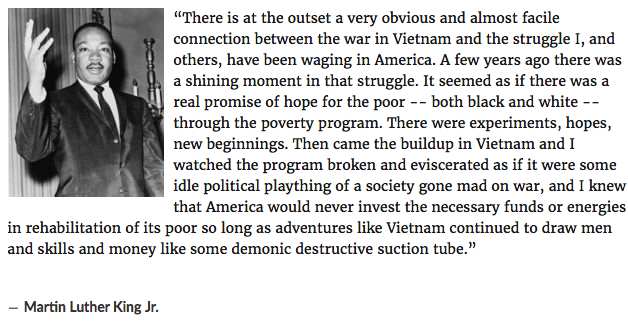
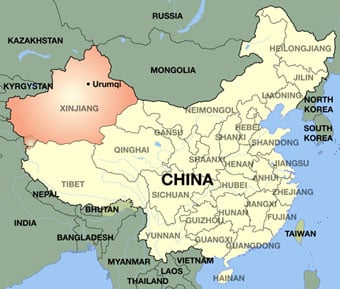 From September 1949, Mackiernan had turned southwards – from where he was based in Xinjiang, north-western China – towards the nearby and little known Taklamakan Desert, a picturesque but inhospitable terrain almost the size of Germany, which is ringed by rugged mountains to the south and west, while the Gobi Desert stretches out in vast expanses to the east.
From September 1949, Mackiernan had turned southwards – from where he was based in Xinjiang, north-western China – towards the nearby and little known Taklamakan Desert, a picturesque but inhospitable terrain almost the size of Germany, which is ringed by rugged mountains to the south and west, while the Gobi Desert stretches out in vast expanses to the east.


